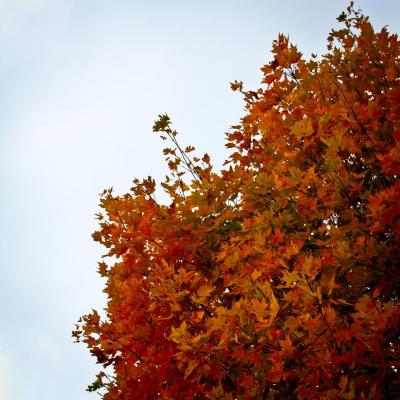Trees in King
The Township of King is committed to maintaining our vast supply of forested lands and expanding the urban tree canopy within our villages and hamlets.
Did You Know?
- King has over 8,000 hectares of forested lands, almost 25% of our total geographic area.
- Over 20% of all forest cover in York Region is found within King
- King had the highest growth in forest area out of all York Region municipalities between 2009 and 2012
Planting a Tree is Easier Than Ever
Residents of King are eligible to receive subsidized tree planting in their backyards with the help of Local Enhancement and Appreciation of Forests (LEAF). For $150-220 per tree, LEAF will provide consultation with a registered arborist, site assessment, delivery and planting of a 5 to 8 foot tree in your backyard.
To receive your backyard tree, visit www.yourleaf.org
Do I need a permit to remove trees?
If your tree is part of a woodlot or woodland, you must acquire a permit from the Region of York to remove any trees. Please contact York Region Forestry at 905-830-4444 ext. 73000 for more information before performing any work.
If you are removing trees from your property that are not part of a woodlot or woodland, you do not require a permit and do not need to notify the Township. However, it is strongly recommended to keep your tree if it is in good health and is not a safety risk - see the Benefits of Trees page for more information.
Before you remove a tree, please ensure that it is not a boulevard tree, and that the tree is not shared property with your neighbour. Please visit the Municipal Trees and Property Boundary Trees pages for more information about tree ownership.
Tree Removal & Planting
As part of a Township-wide tree maintenance program, parks staff will remove all dead and damaged trees on municipality owned property and plant a new one in its place. The majority of trees that will be removed have been killed by the emerald ash borer (EAB) affecting municipalities across southern Ontario.
The Township of King is committed to replacing the removed trees. In some circumstances (conflict with utilities or sight lines) a replacement may not occur. In these cases we will plant a tree in an alternate location to ensure King's tree canopy continues to be one of the primary features in keeping King green
If you spot a tree on municipal property that needs inspection contact parks@king.ca
Tree Maintenance
Trees require care and maintenance to remain healthy and safe. Here are some tips and practices you can follow to keep your trees in good health:
General Tips
- When budgeting for lawn care and seasonal landscaping, set some funds aside for tree maintenance
- Water trees during dry periods and apply mulch two to three inches deep around the base to encourage growth
- Avoid soil compaction: placing or moving heavy objects over the root zone of your tree can be hazardous. Compaction reduces air space in the soil, making it harder for water and oxygen to reach your tree's roots.
Pruning
- Good pruning will promote the safety, health, longevity, and attractiveness of your tree
- What to prune: dead, diseased or damaged branches, obstructing branches, and crown thinning to promote growth and air circulation
- When to prune: pruning is best performed in the fall or early winter when the tree (and potential fungi and insects) are dormant.
- How much to prune: no more than 25% of the crown of the tree. Excessive pruning exposes your tree to disease and infestation by insects, and risks fatally damaging your tree.
- If your tree is too large to prune safely on your own, consider hiring a certified arborist to perform the work. A certified arborist will know how best to promote your tree's health, safety, and aesthetic appearance.
Protect Trees From Damage
- If possible, avoid using lawn care or other equipment in the immediate vicinity of your tree.
- Do not tie, nail or attach objects to the trunk of the tree.
- When digging, take care not to cut or damage any exposed roots.
- Look for signs of pests or disease. Refer to Managing Disease and Hazards for more information. Please note that under the Pesticides Act, 2009, it is illegal to use pesticides or chemicals for residential lawn care treatment in Ontario.

